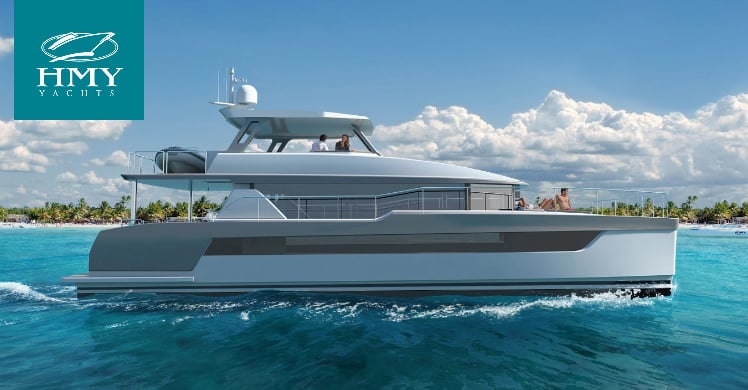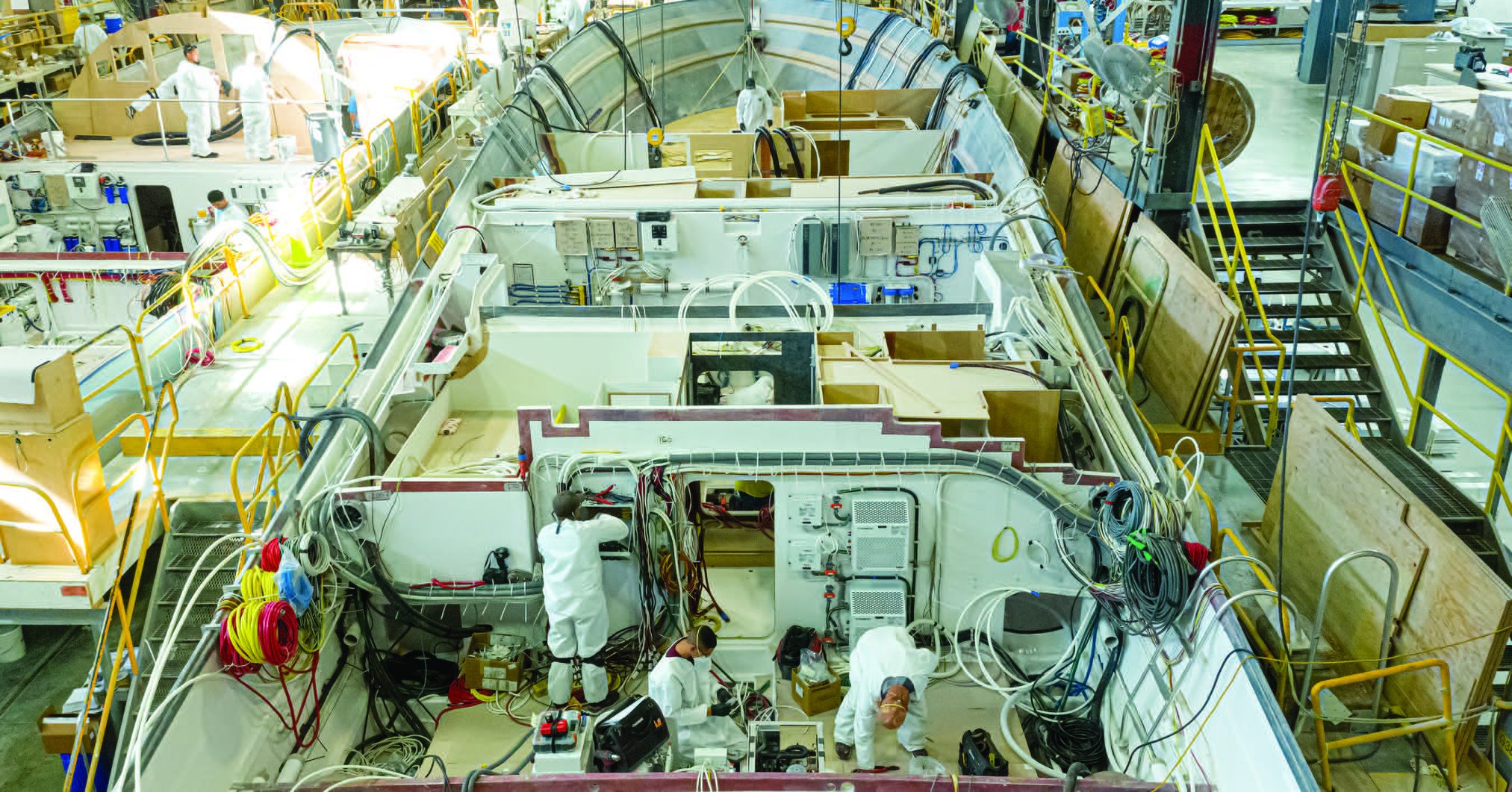
Viking Yachts Below Deck — What’s Really Under There?
“Building a Better Boat Every Day.”
Viking Yachts’ well-known five-decades-old philosophy has propelled them to the pinnacle of the yachting world. An unquestioned industry leader in performance, innovation, engineering, and luxury, they constantly strive for more.
This doesn’t just apply to their striking exterior and interior designs, but also to everything under the hood, or more appropriately, below deck. What makes these award-winning sportfishing yachts, motor yachts, and luxury center consoles so revered and coveted? What enables that powerful propulsion, smooth ocean ride, and stability?
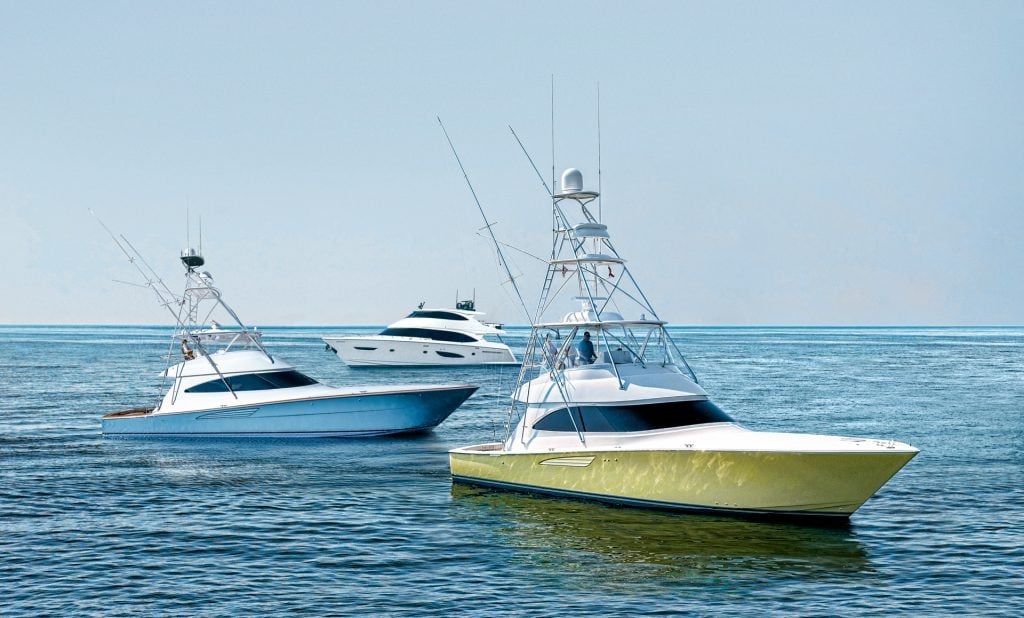
The build process, quality control, and meticulous craftsmanship that goes into building some of the world's finest yachts and luxury center consoles is their secret sauce. More than 90% of every Viking is built in-house. Except for components such as engines, transmissions, air conditioning units, and electronics, virtually everything else is produced by Viking or a one of their subsidiary companies.
Whether it’s a fiberglass fuel tank, a wiring harness labeled every eight inches, or a hull-to-deck joint through-bolted every three inches, owners can be sure of incomparable quality.
Driven by an unrelenting desire for continuous innovation and development, and with a massive 800,000+ square foot manufacturing facility loaded with advanced machinery as a playground and testing lab, Viking’s engineers never stop tinkering.
The ultra-modern facility is equipped with the latest technology, including multiple CNC routers for cutting composite and wood parts and a $1 million five-axis profiler, which creates foam plugs to build complex molds.
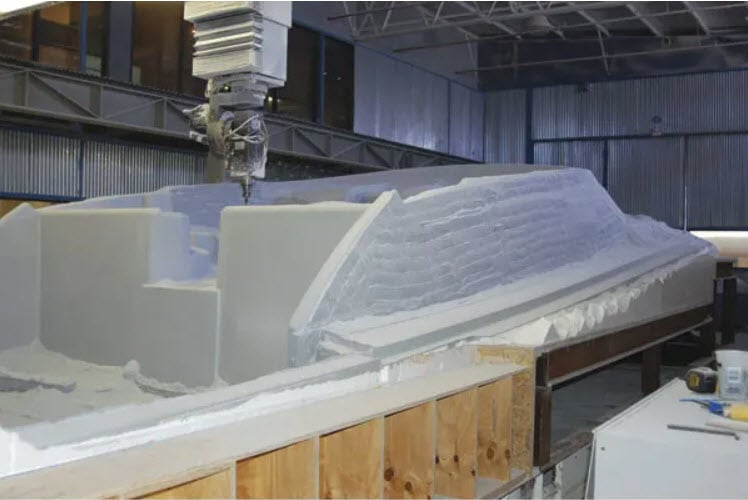
And to Viking, all the components you don’t see are equally as important as everything you do.
Let’s take a peek.
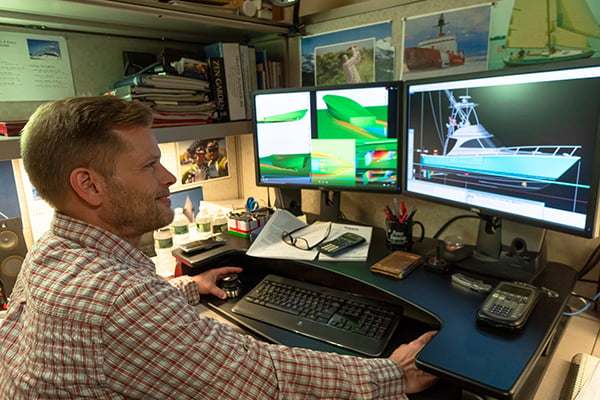
The build process starts with Viking’s Design and
Engineering Department, where more than 56
years of experience is used to persistently push naval architecture boundaries.
A recent big advancement in computer design now includes Viking’s use of Computational Fluid Dynamics (CFD) software, which allows Viking to conduct virtual tank tests. Having this software in-house is an enormous benefit, as it gives the Design and Engineering team the ability to constantly test and iterate through numerous virtual trials, greatly helping to optimize running surfaces for better performance on new models.
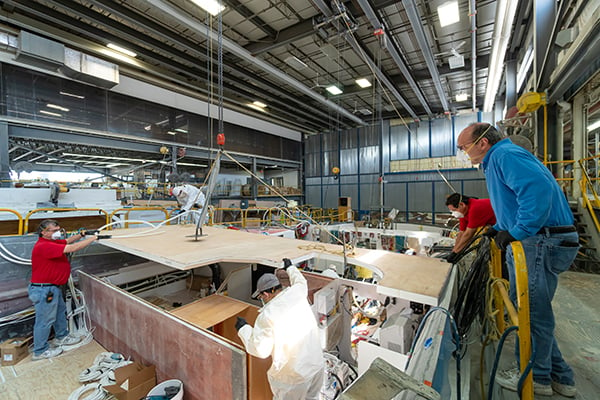
Viking’s interiors are known for their beautiful hand-crafted wood cabinetry. But there is much more to them than what meets the eye.
To reduce overall boat weight and achieve better performance and efficiency, Viking uses every conceivable modern construction method to eliminate wasteful burning of fuel by designing lightweight, yet strong, components. This includes on the cabinetry.
Behind those elegant wood finishes are cutting-edge composite cores. Because when you have as many custom crafted cabinets as these yachts do, this construction method adds up to more efficiency, longer range, and faster speeds.
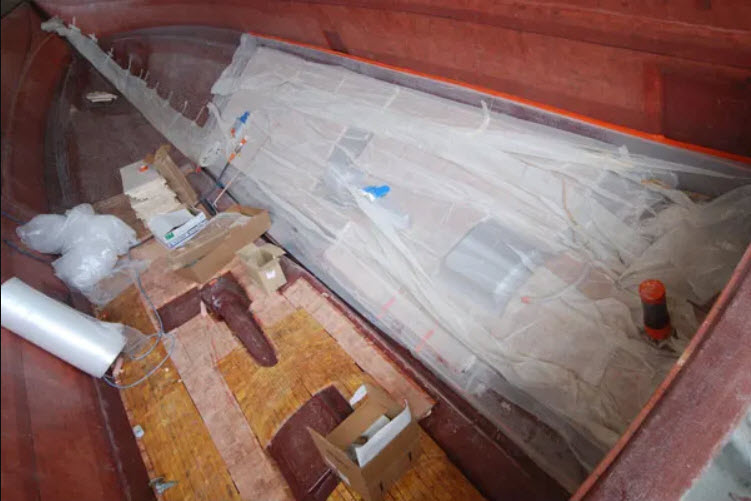
The legendary Viking deep V hull is another place where technology helps reduce unnecessary weight. Resin infusion technology and precisely patterned and fitted laminate and coring materials provide superior tensile strength and rigidity resulting in larger fuel capacities, longer range, and faster more efficient cruising speeds.
The vacuum suction in resin infusion works by drawing out air from the materials while pulling the resins in to replace the empty space, which allows for the resin to be evenly pulled into every pore of the materials, resulting in stronger hulls and superstructures with dramatically less chance of delamination issues or weight inconsistencies.
In order to do the jobs they’re built to do, Viking’s motor yachts, sportfishing yachts, and center consoles need to have the structural strength to handle it. Viking has spent decades perfecting their stringers to handle the loads in stride by adding rigidity where it counts, including using structural steel beams over the stringers for precise alignments and secure mounting of the engines.
Viking also uses advancements in resin infusion in the creation of tankage (fuel, water, and waste tanks), propeller boxes, engine-room vents, and other components. And all tank bottoms mirror the shape of the hull bottom itself, maximizing capacity and draw.
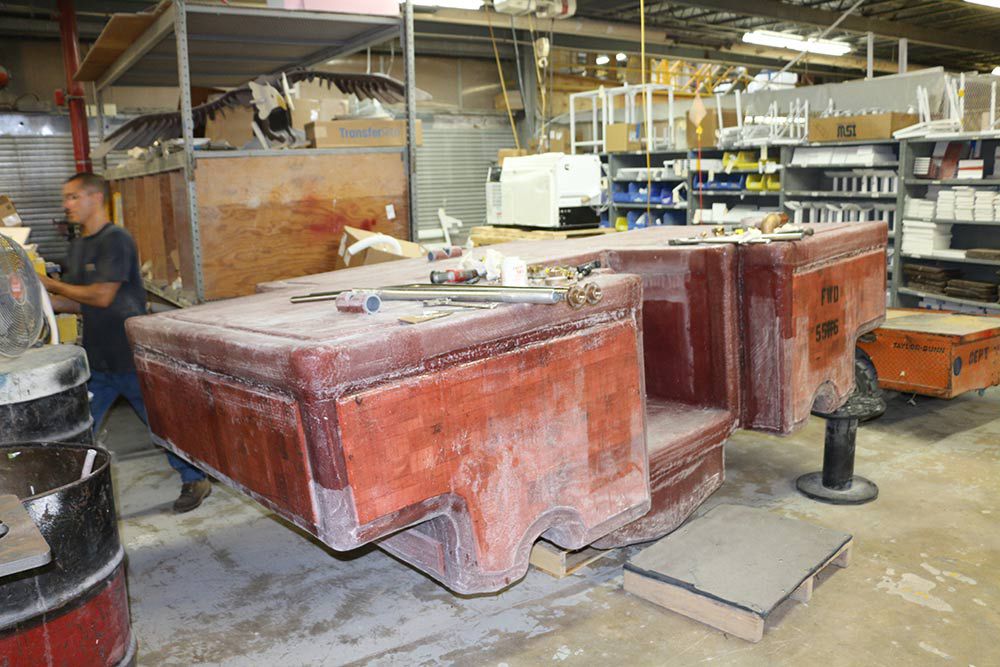
After the hull is molded, fiberglass encapsulated stringers, bulkheads, and egg crating are installed and bonded to the hull, adding strength, internal structure, and support.
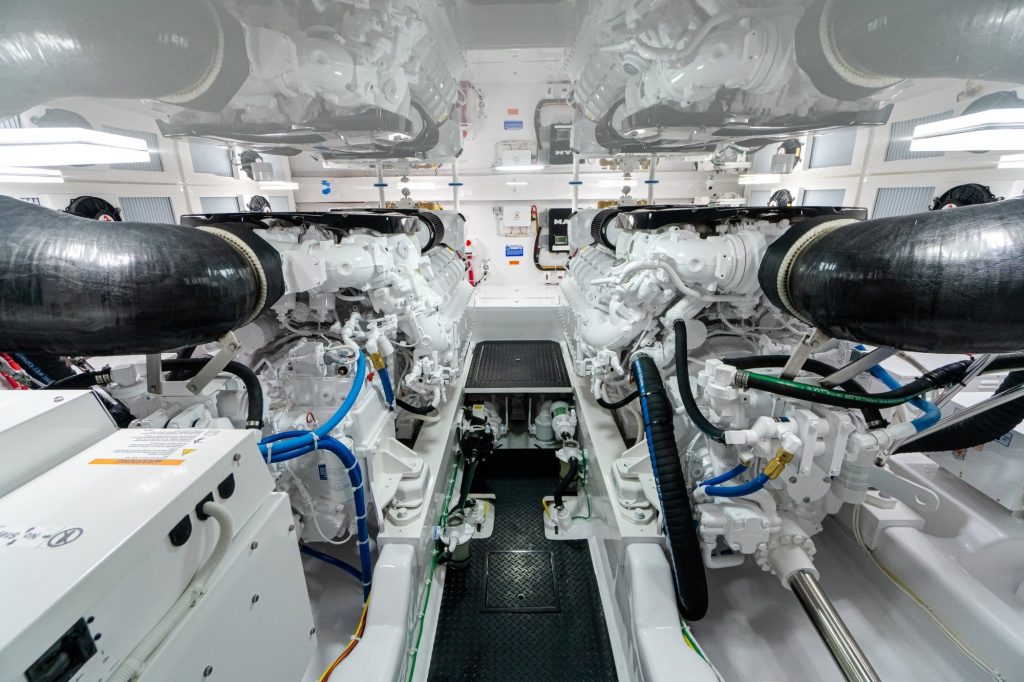
Viking is a diehard believer that the engine room needs to be squeaky clean and easily accessible. They simply do not play around here, building in ample headroom and space to move around the engines.
To safely and securely handle the thousands of pounds of wiring needed to operate the hundreds of onboard systems, Viking’s electrical department creates a custom harness for every yacht.
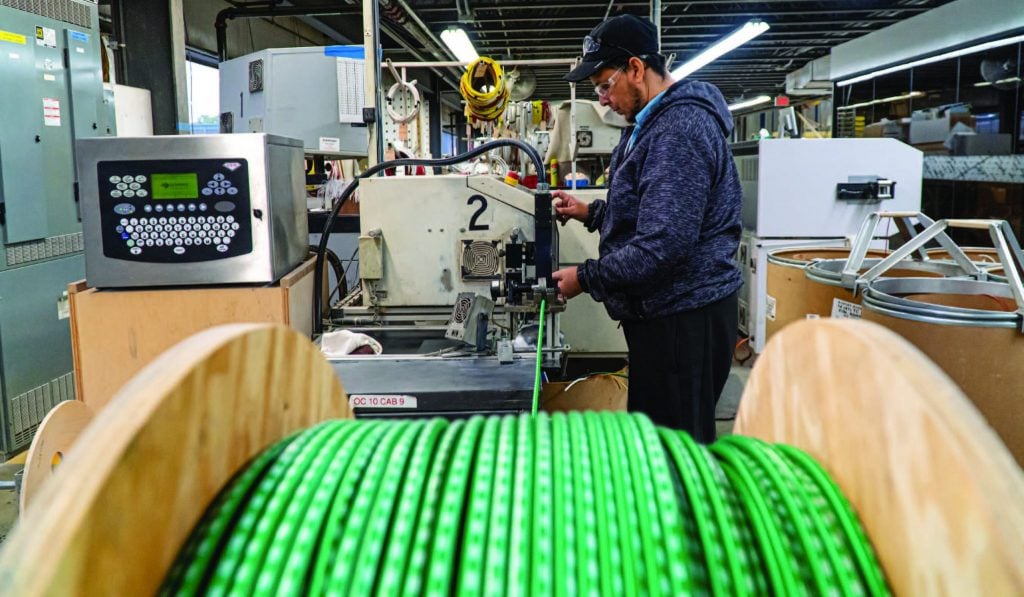
As the Healey family likes to say, “We are at the top of the mountain, we enjoy the view, and that’s where we’re staying.”
That commitment is clear in the investments they’ve made in technology and the constant innovation. And it’s reflected in every inch of every yacht that rolls off their production line. Let us show you firsthand with a private showing of the latest Viking models or one of the turnkey brokerage boats ready for a new home. Contact HMY today to experience the Viking difference. (561) 331-5200

